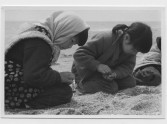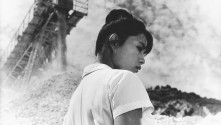
The Other New Wave.
Alternate Histories of Post WWII Japanese Cinema
When discussing the birth of the Japanese New Wave, it is typical to begin with the major Shochiku Nouvelle Vague (nuberu bagu) directors: Nagisa Oshima, Masahiro Shinoda and Kiju Yoshida. However, this approach is somewhat limiting. Not only were these directors critical of the term "New Wave" itself—which inaccurately compared them to French New Wave filmmakers who made films outside the studio system—but they are also only three of the many key figures, known and unknown, who gave rise to this sea change in Japanese cinema.
Within Shochiku, rarely discussed filmmakers such as Tsutomu Tamura, Osamu Takahashi and Eitaro Morikawa also made their first films alongside Oshima and Shinoda as part of the studio's New Wave initiative. Outside of Shochiku, other major studios concurrently invested in new talent: at Toho, young directors like Eizo Sugawa and Hideo Onchi made films associated with the New Wave; at Nikkatsu, Koreyoshi Kurahara built upon the cutting-edge work carved out by Ko Nakahira; and, at Daiei, scriptwriter Yoshio Shirasaka wrote for exciting new filmmakers after collaborating with Yasuzo Masumura.
Beyond the studios, an abundance of innovative activity was found in university film clubs, avant-garde circles and among independent filmmakers and documentarists: the Nihon University Film Club broke away from the conventions of the student film to embark on new experiments; Hiroshi Teshigahara established a space for arts activities and film screenings at the Sougetsu Art Center; and pioneering filmmakers Nobuhiko Obayashi and Yoichi Takabayashi made 8mm films with unrestrained energy and productivity.
Moreover, a number of filmmakers sought to unite avant-garde film theory with praxis in their respective fields: Eizo Yamagiwa launched the seminal film journal Eiga Hihyo (Film Criticism) and made films at Taiho studios, newly formed from the ashes of Shin-Toho; Toshio Matsumoto and Shinkichi Noda edited and wrote for Kiroku Eiga (Documentary Film) while engaging in radically experimental forms of documentary practice.
In the background of all this film activity, postwar Japanese society was dealing with its war responsibility—an issue that splintered the preexisting left wing establishment (primarily made up of the Japanese Communist Party) and gave rise to the student-led New Left. Among the most volatile issues for these young political activists was the proposed 1960 US-Japan Security Treaty, or Anpo, around which many demonstrations and fights erupted. The filmmakers who birthed the New Wave in the late 1950s and early ‘60s directly and indirectly responded to these emerging ideologies and movements through their work, which they imbued with newfound subjectivity and self-awareness as auteurs.
Taking all of this into account, discussions of the New Wave should move beyond analyzing major representative films and filmmakers in and of themselves in order to also consider the surrounding production systems, genres, theories and sociopolitical contexts from which they emerged—only then can we approach a deeper understanding of this dynamic moment in film history. By excluding repeatedly cited and heralded figures like Oshima and Shinoda in order to focus on overlooked films and filmmakers that emerged from a wide range of practices and backgrounds, I hope this film series can offer another face of Japanese New Wave cinema.















